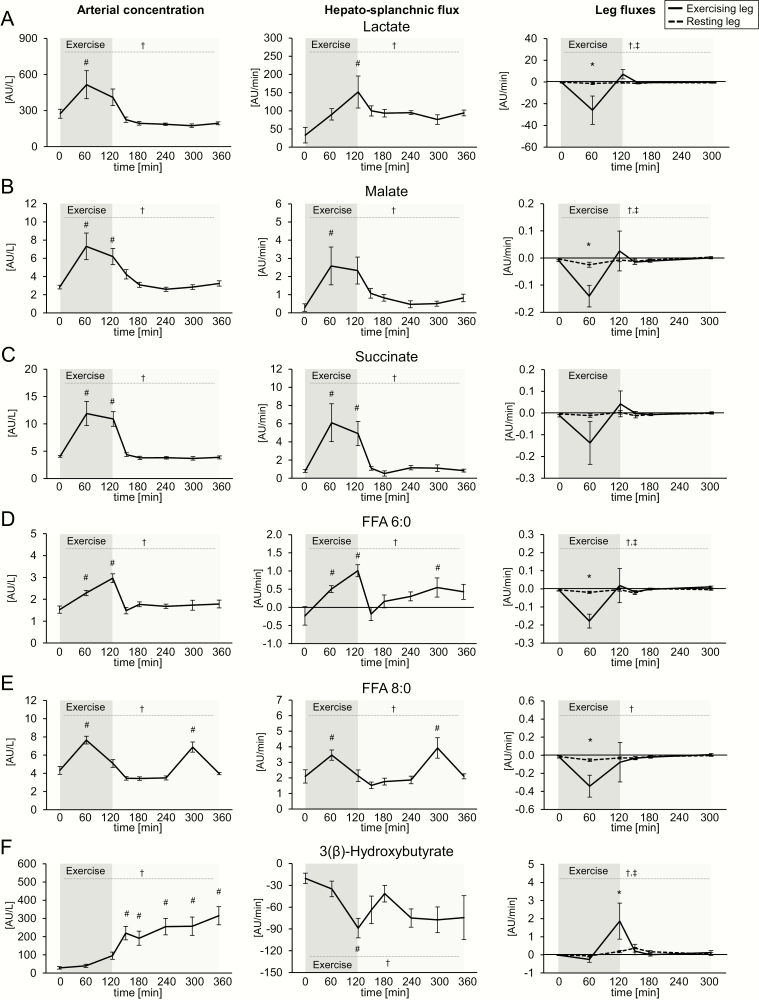Figure 4.
Metabolites exhibiting a significant increased uptake into or release from the hepato-splanchnic bed were further assessed for an opposing flux from the exercising leg. This was the case for A: lactate, B: malate, C: succinate, D: FFA 6:0, E: FFA 8:0 and F: 3-(β)-hydroxybutyrate. Shown are arterial (systemic) concentrations from the hepato-splanchnic exercise study (left panel), hepato-splanchnic fluxes (middle panel) and fluxes over the resting and exercising leg (right panel). Data are presented as mean ± standard error (SEM). †: significant effect of time; ‡: significant effect of leg*time; #: significantly different from 0 min; *: significantly different between exercising and resting leg according to Bonferroni post-hoc test. Succinate showed a significant difference between exercising and resting leg after 60 minutes of exercise, but only a trend towards a time effect in the two-way ANOVA (P = 0.0945).

